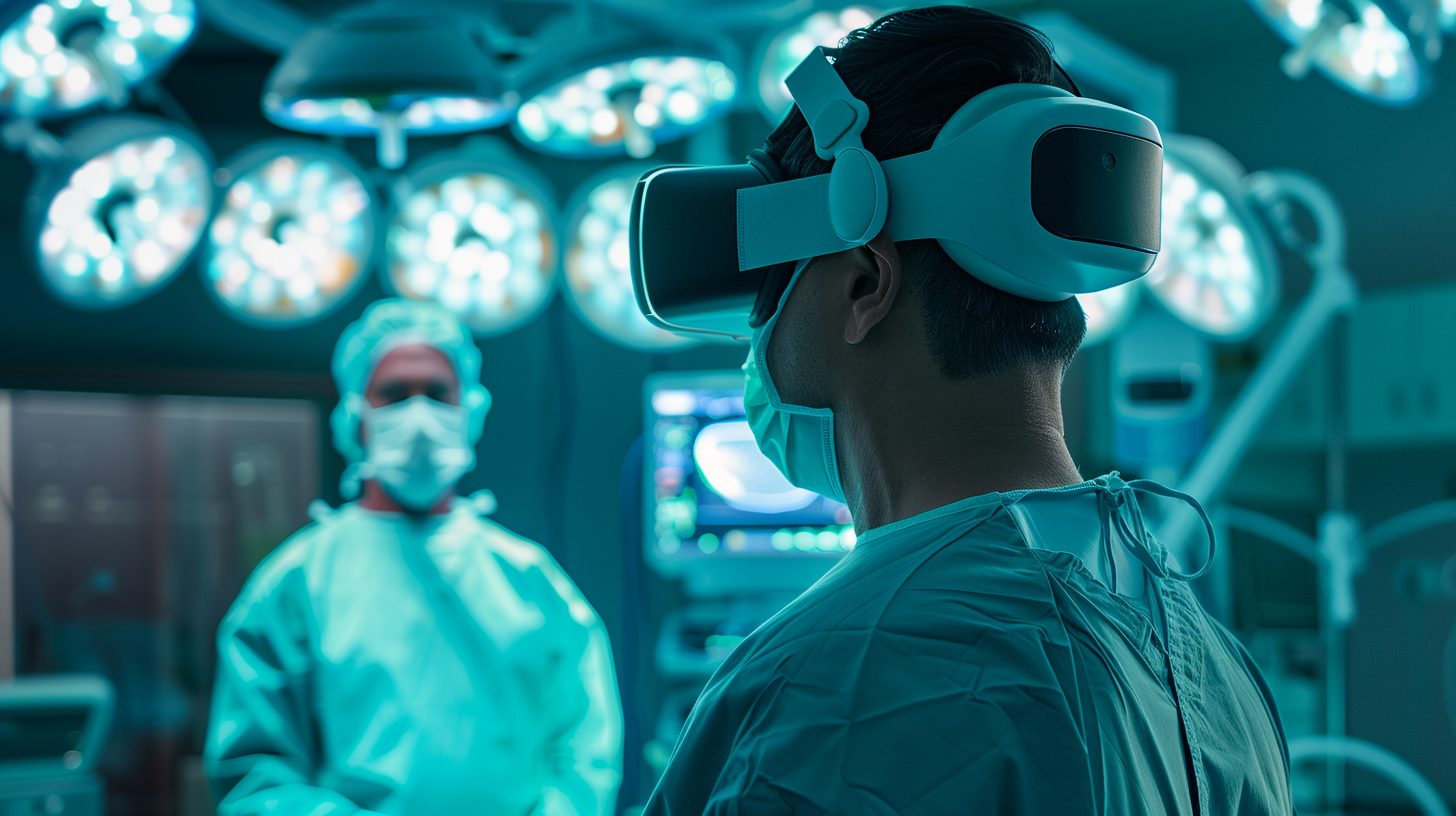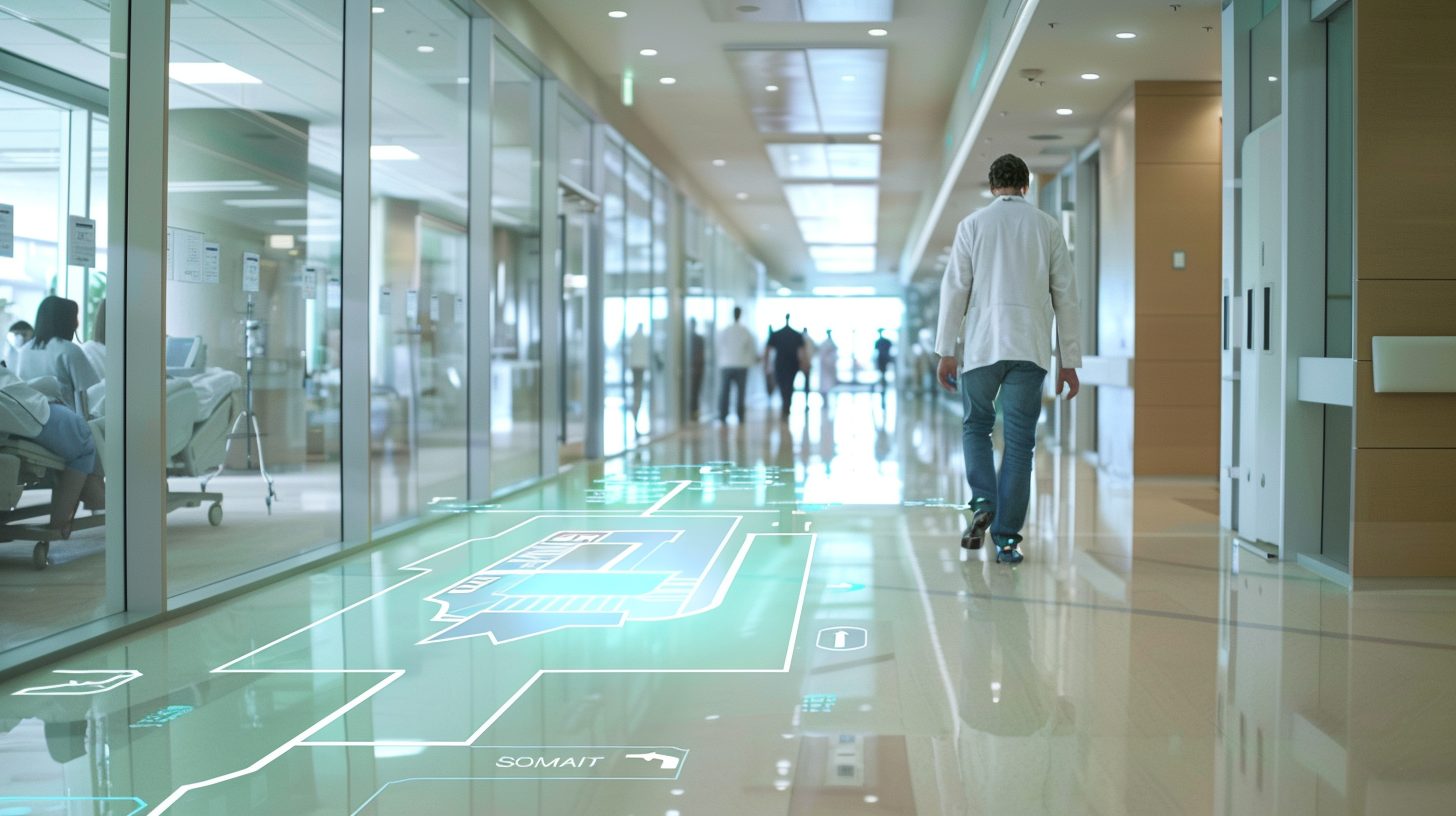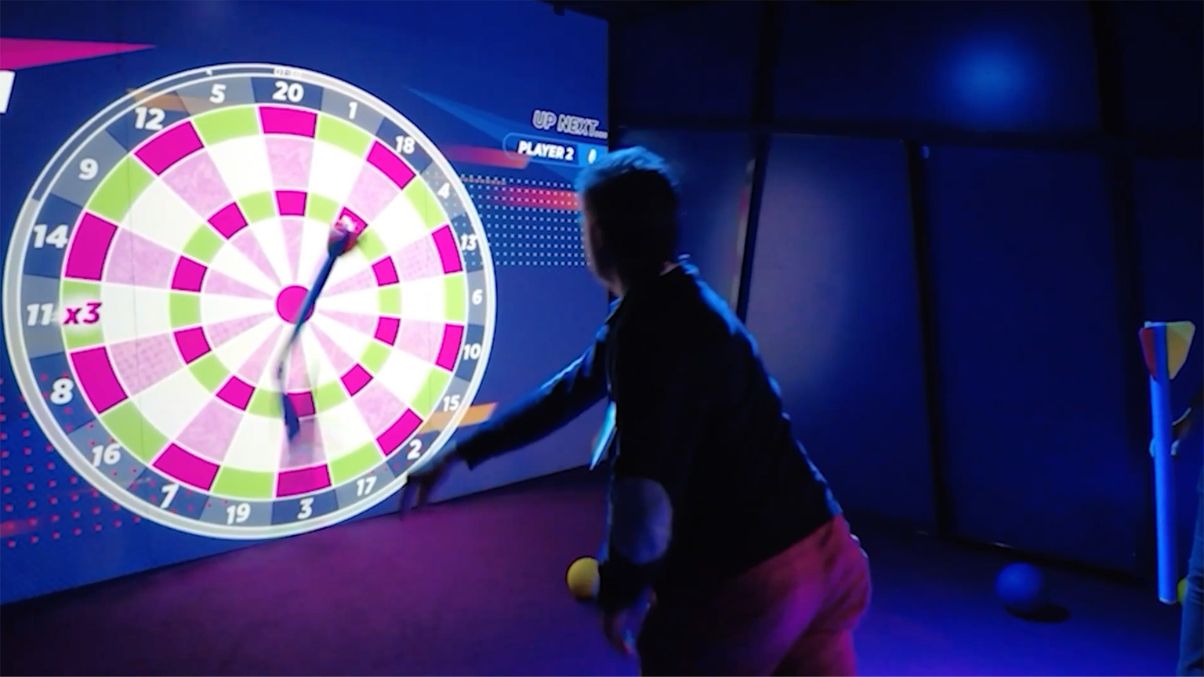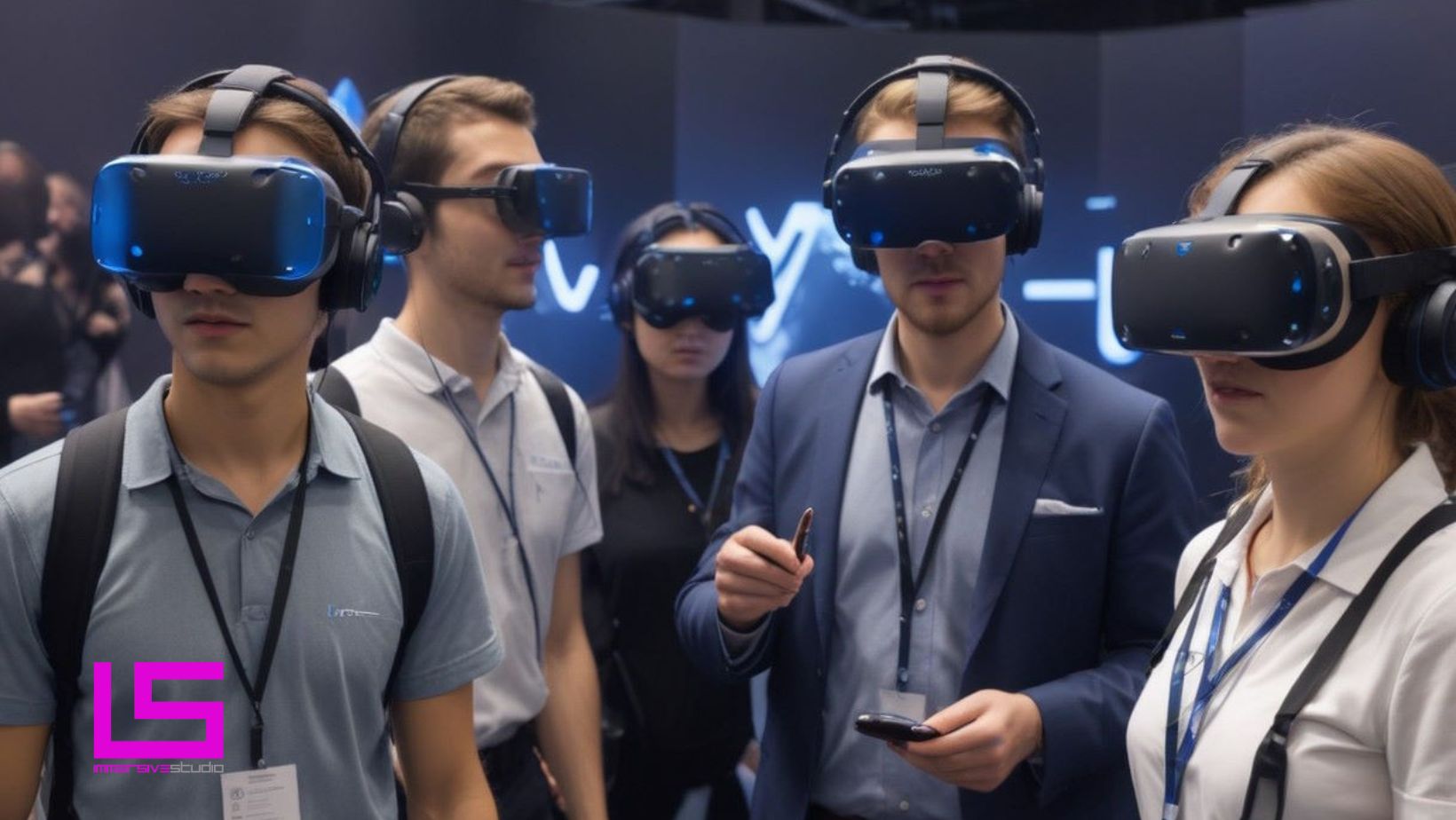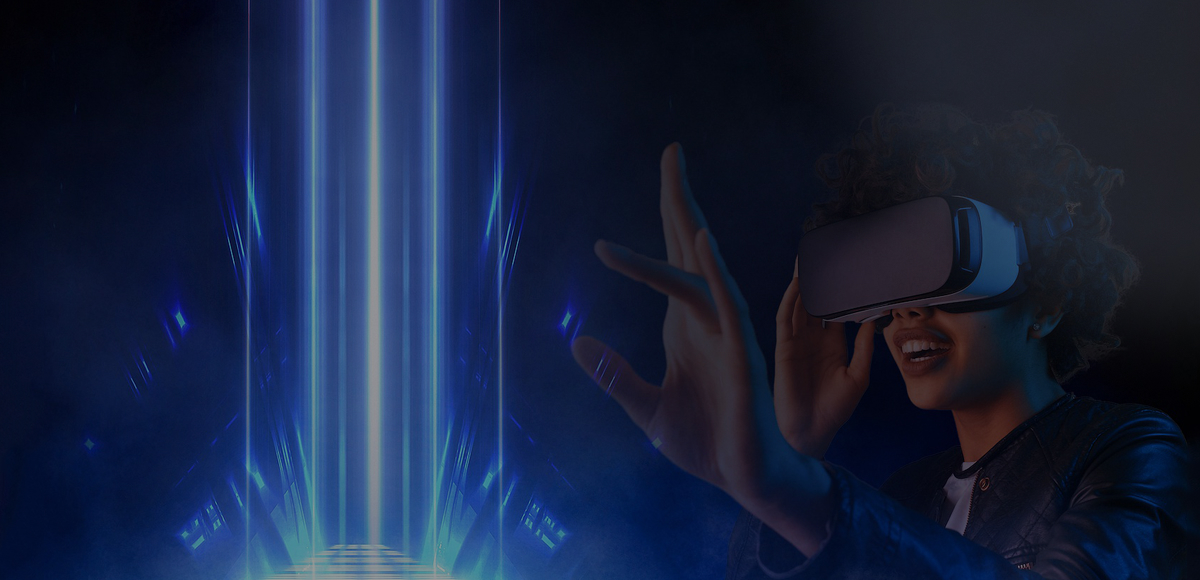
Immersive Technologies in Healthcare and Their Use
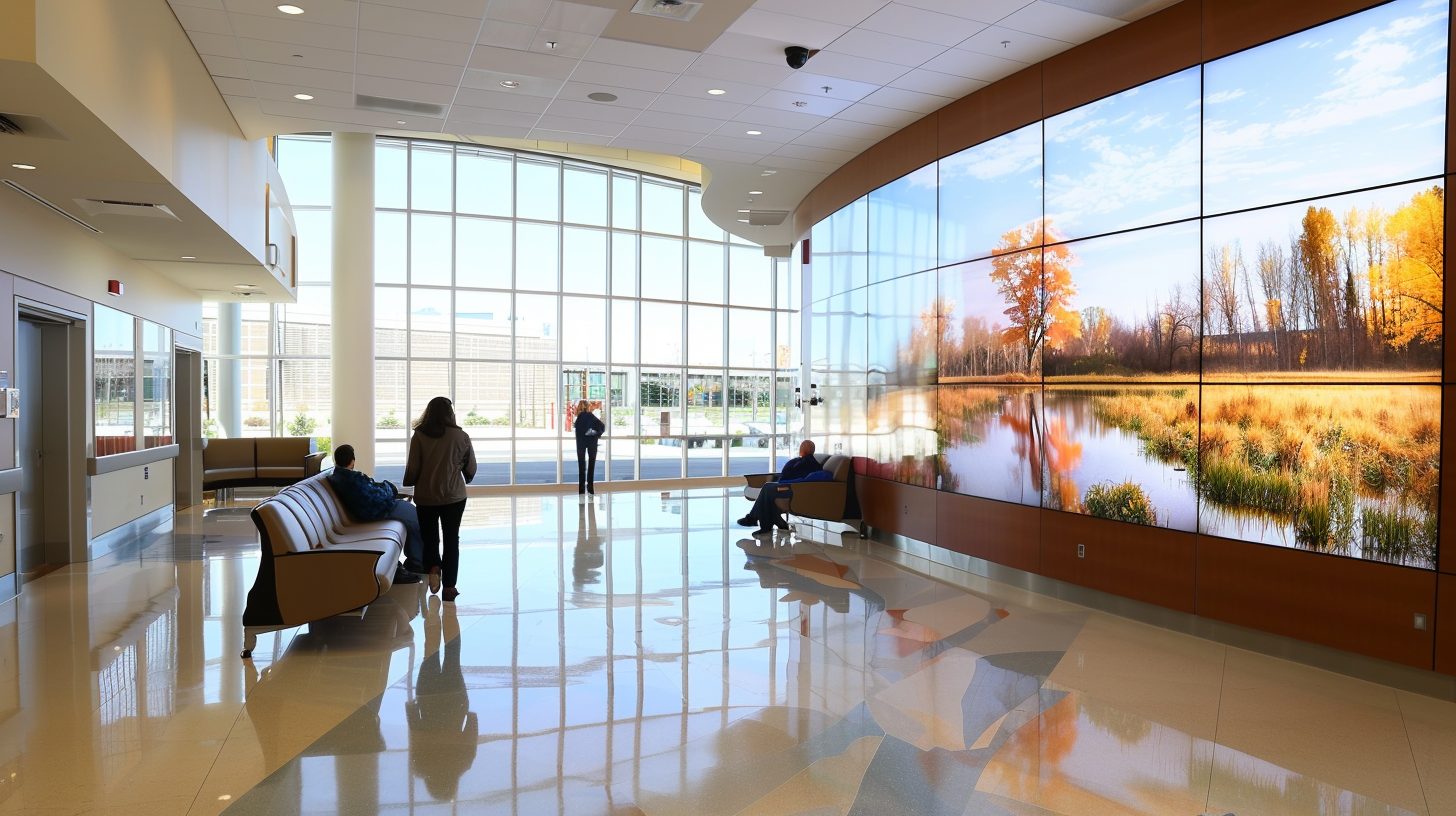
The healthcare industry is constantly evolving and innovating to provide better care and outcomes for patients and professionals. By seamlessly blending digital environments with the physical world, these innovative tools are not just altering but enhancing the very fabric of medical care and education. Immersive technologies, encompassing virtual reality (VR), augmented reality (AR), mixed reality (MR) and digital twins, forge interactive experiences that have catapulted healthcare into a futuristic domain previously imagined only in science fiction.
The use cases of immersive technologies in healthcare are vast and varied, transforming both patient care and professional training. Surgeons now can practice complex procedures within risk-free virtual settings before stepping into actual operating rooms, paving the way for improved outcomes. Patients suffering from chronic conditions or undergoing rehabilitation find solace in AR applications that assist them through realistic simulations and exercises. Meanwhile, digital twin technology allows professionals to create exact replicas of organs or body systems to study diseases or trial treatments without any direct risk to patients.
What are Immersive Technologies?
Immersive technologies refer to advanced tools such as AR applications, simulated environments, digital twins, interactive surfaces, that simulate or enhance real-world environments, offering a sense of presence and engagement that traditional methods lack. These technologies include Virtual Reality (VR), Augmented Reality (AR), and Mixed Reality (MR), each providing unique applications and benefits:
Virtual Reality (VR)
In the healthcare industry, VR has great potential and can allow surgeons to practice operations in risk-free and controlled environments by simulating surgical procedures. This not only reduces the risk of errors in actual surgeries but also helps medical students and surgeons refine their skills the most effectively without the risks and barriers involved in real-life operations.
Augmented Reality (AR)
We all know that healthcare is full of complex surgeries, and AR can assist with these complex surgeries by overlaying critical information, like the precise location of blood vessels, via the use of Hololens headsets. Solutions like this can allow surgeons to perform surgeries with enhanced precision and confidence, potentially improving the accuracy and outcomes of surgical operations.
Mixed Reality (MR)
If we speak of mixed reality, MR technologies like interactive 3D models can be utilized for patient education, where interactive 3D models of anatomy can be superimposed in real-time during consultation. With the help of MR, patients can gain a better understanding of their medical conditions or the surgical procedures they will undergo, leading to informed consent and reduced anxiety.
How are Immersive Technologies Used in Healthcare?
Immersive technologies have a wide range of applications and benefits in healthcare, such as:
Digital Twin
A digital twin in healthcare is a sophisticated 3D virtual model that mirrors a physical entity, such as a hospital or even a human organ, in real time. It integrates data from various sources to create a dynamic & up-to-date replica that can be used for simulation, analysis, and control. Here’s a more detailed breakdown:
- Digital Twin of a Healthcare Facility: simulates the entire hospital environment and its functions including the operations, capacities, staffing, and patient flow. This helps the hospital management with resource optimization, risk management, and to run the operations efficiently by leveraging both historical and real-time data. By leveraging historical data, these systems can forecast potential bottlenecks in patient care or identify areas where maintenance may soon be needed. For instance, by simulating various scenarios – such as an influx of patients due to seasonal illnesses – hospitals can adjust staffing levels or allocate resources more effectively to ensure uninterrupted quality care.
- Digital Twin of the Human Body: creates a personalized model of patients’ physiology, incorporating genetic makeup and lifestyle data. By creating a virtual model of the human body, medical professionals and researchers are able to simulate the progression of diseases and the effects of medication without any risky trials on humans.
In essence, a digital twin serves as a bridge between the physical and digital worlds, providing a platform for innovation and improved decision-making in healthcare.
Virtualization of Complex Procedures
Virtual reality (VR) simulations are increasingly becoming a cornerstone in the preparation and execution of complex surgical procedures, offering an unprecedented layer of depth to surgeon training. These sophisticated VR platforms allow surgeons to immerse themselves fully in a controlled environment where they can simulate operations on highly detailed and anatomically accurate virtual patients. This not only enhances their skills without risking patient safety but also allows for the rehearsal of surgeries for rare or unusual conditions that a surgeon may seldom encounter in real life. The immersive nature of VR provides feedback in real-time, enabling surgeons to refine their techniques with precision, learn from mistakes safely, and ultimately gain confidence in their abilities before stepping into an actual operating room.
In parallel with virtual reality’s advancements, augmented reality (AR) condition simulation presents itself as another transformative technology reshaping surgical practices. AR overlays digital information onto the physical world, providing surgeons with vital data during procedures without diverting attention away from the patient. It proves especially crucial during intricate operations where understanding the unique anatomical variations and complexities of each patient is paramount. By using AR for preoperative planning and intraoperative navigation, surgeons can visualize critical structures like blood vessels or tumors more clearly, enhancing decision-making efficiency under high-pressure situations. Such innovative applications ensure that every incision is informed by an optimal blend of human skill and cutting-edge technology.
Together, these immersive technologies mark the dawn of a new era in surgical education and practice – one characterized by increased safety standards coupled with refined procedural outcomes based upon informed guidance offered through realistic simulations wherein efforts made extend beyond saving lives into improving quality post-surgery recoveries as well
Virtual Training
Technologies like screen-based simulations have tremendous potential to help the healthcare sector with advanced virtual training. Screen-based simulations (SBS) are a powerful tool in healthcare education, offering a versatile and effective means of training healthcare professionals. These simulations use digital technology to represent patients, healthcare scenarios, or entire healthcare systems. This innovative approach not only enhances learning experiences by providing real-time feedback but also enables trainees to proactive procedures as often as required to achieve proficiency without the risks associated with live patient interventions.
One of the well-renowned institutions in the world, Johns Hopkins University utilizes an immersive virtual reality curriculum across all its programs via a collaboration between Johns Hopkins University and ImmersiveTouch VR technology. This partnership aimed at equipping neurosurgeons with unparalleled precision in pre-surgical planning phases has yielded remarkable outcomes. Surgeons immersed themselves in detailed 3D models constructed from patients’ diagnostic scans, allowing them not only to visualize but interactively explore brain pathways before making actual incisions. Post-implementation reviews revealed enhanced surgeon confidence levels coupled with significant reductions in operative times and improved postoperative recovery rates among patients.
Ultimately, virtual training represents a significant stride forward in our quest to merge the realms of healthcare and technology, fostering a future where precision, efficiency, and comprehensive education are the cornerstones of medical practice.
Health and Well-being Walls
Health and well-being walls are interactive and immersive walls that can transform mundane clinical areas into interactive hubs of wellbeing. These walls can be installed in various locations such as waiting areas, treatment rooms, or wards and blend visual content such as serene landscapes and calming scenes with vital health information tailored to individual patients or specific groups. Not only do they offer a much-needed mental escape for patients navigating the stressors of medical treatments but they also educate and empower individuals by providing tips on nutrition, exercise and mindfulness practices right at their fingertips.
These innovative installations can be used in various healthcare settings, enhancing the environment and user experience. For instance:
- In Waiting Rooms: to display real-time updates on wait times, health tips, or calming visuals to reduce patient anxiety.
- Along Corridors: to guide patients to their appointments, offer educational content about health conditions, or even provide light physical activities to engage them as they move through the facility.
- In Patient Wards: to display personalized information such as treatment schedules, while also offering entertainment options like music or games to help patients relax and pass the time.
Wayfinding Around Hospitals
Navigating to parts of a hospital can be daunting, especially when under the stress of a medical concern. By leveraging AR technology through smartphones individuals can access real-time directions superimposed onto their immediate environment. By reducing the time and effort required to navigate complex facilities, hospitals can improve patient satisfaction, decrease late or missed appointments, and allow staff to focus more on patient care rather than giving directions. Moreover, these technologies can be updated in real-time to reflect changes in the facility, such as temporary closures or new services, ensuring that the information provided is always current.
How Can Immersive Studio Help?
Immersive Studio is at the forefront of transforming healthcare with cutting-edge immersive technologies. Here’s how our services specifically cater to the healthcare industry:
Design and Development
- Surgical Training Simulators: Leveraging Unity and Unreal Engine, we can create realistic 3D simulations for surgeons to practice complex procedures without risk to patients.
- Patient Education Applications: Using Microsoft HoloLens, we can develop interactive experiences that help patients understand their medical conditions and treatment procedures.
- Therapy Simulations: We can create tailored simulations viewed using VR Headsets or Projection Mapping to help therapists treat patients who a suffering from PTSD, or sensory simulations for patients with Autism
- Wayfinding Apps: Leveraging the power of AR we can create a dedicated app to overlay directions onto the immediate environment allowing patients to easily navigate around the hospital.
- Wellbeing Walls: We can help transform clinical environments by creating visual content for Well-being walls such as serene landscapes or calming scenes, helping to relax and calm patients.
Benefits for Healthcare
- Enhanced Medical Training: Immersive technologies provide a safe environment for medical professionals to train, reducing errors and improving patient outcomes.
- Cost-Effective Solutions: Virtualization of training and patient education reduces the need for physical resources like space and traveling, leading to significant cost savings.
- Improved Patient Experience: By offering engaging and understandable patient education tools like 3D anatomy models, we enhance patient satisfaction and adherence to treatment plans.
Final Words
At Immersive Studio, we’re not just developers; we’re your partners in healthcare progress. We work closely with you to tailor solutions that enhance patient care, streamline clinical operations, and empower healthcare providers with the tools they need for excellence in the digital age. Our approach is collaborative, our technology is state-of-the-art, and our goal is to set new standards in healthcare efficiency and patient engagement.
If you are interested in learning more about our immersive solutions contact us today. Do you think immersive technologies are the future of healthcare? Let us know your thoughts. You can also drop us a message on Facebook, LinkedIn, or Instagram.
